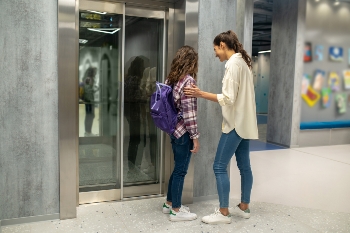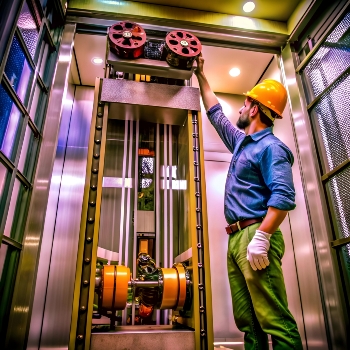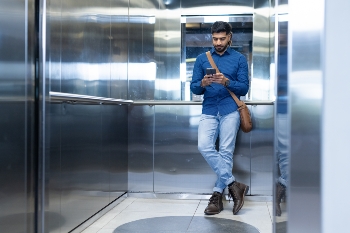Lift
Pdf downloadThe installation of a lift is a technical process that involves several carefully planned stages to ensure the safety, efficiency and functionality of the system.
Materials used, such as stainless steel, play a crucial role in both structural and aesthetic terms, being key to ensuring the durability and quality of the lift.
Lift installation process
The process of installing a lift varies according to the type of building and the system to be used (traction, with machine room, hydraulic, etc...) but generally, they all follow the following steps:
- Space assessment and project design
Before installation begins, the analysis of the building is essential. Engineers review architectural plans to determine the future location, space for machinery and specific structural requirements. In some cases, it is necessary to modify the building structure or reinforce certain areas to comply with local safety codes and regulations.
- Preparation of the lift shaft, where necessary
Once the project has been defined, the construction or adaptation of the lift shaft is carried out. This space, which must meet strict safety standards, is where the car will move. In the case of existing buildings, this step may involve significant adaptation works, while in new constructions it is usually planned from the initial design. There are also cases, due to the lack of space inside the building or to be able to enjoy the views, which are installed outside.
- Installation of the guide system and counterweights
Guides are vertical rails along which the lift will move. These guides must be installed with precision to ensure that the car moves smoothly and steadily. A system of counterweights is fitted to balance the load of the lift, reducing the strain on the motor and improving the energy efficiency of the system.
- Assembly of the machinery
Depending on the lift, the machinery can be located in a machine room or integrated in the shaft itself. It is essential, as it is responsible for controlling speed, traction and braking, among other things.
- Lift car installation
This is where stainless steel comes into play as a key material. Stainless steel cladding, both inside and outside the cabin, provides resistance to daily wear and tear, withstands constant exposure to high number of users and is resistant to corrosion.
At the same time, it is able to maintain its mechanical properties at high temperatures without deforming or breaking, so in the event of an emergency, its resistance to fire and to mechanical damage ensures that the lift maintains its structural integrity, protecting the occupants.
- Installation of doors and safety systems
Lift doors are fitted together with safety systems, which include door closing sensors, emergency braking mechanisms and communication systems. These devices are designed to meet strict safety regulations and protect users.
- Electrical connection and function testing
Lift electrical system is installed to control the operation of the lift. It includes motor power supply, call buttons, commonly made of stainless steel for its antibacterial condition, and the lift lights. Thorough testing is then carried out to ensure that the lift is operating correctly, ensuring that all mechanical, electrical and safety components are in optimum condition.
- Final inspection and commissioning
Lift must pass an inspection by a competent authority to ensure that it complies with safety regulations and is ready for use. Once this inspection has been passed, the lift is put into operation.
As we can see, stainless steel is present in several phases of the construction process, offering an aesthetic, functional and safety plus.
The wide range of finishes available and ease of cleaning, makes it the perfect option to maintain a hygienic and attractive aesthetic that is maintained over time. Attention to this! Stainless steel is easy to clean, if you know how. Just in case, we leave you a https://www.cedinox.es/export/sites/cedinox/.galleries/publicaciones-tecnicas/Cleaning_EN.pdf.



